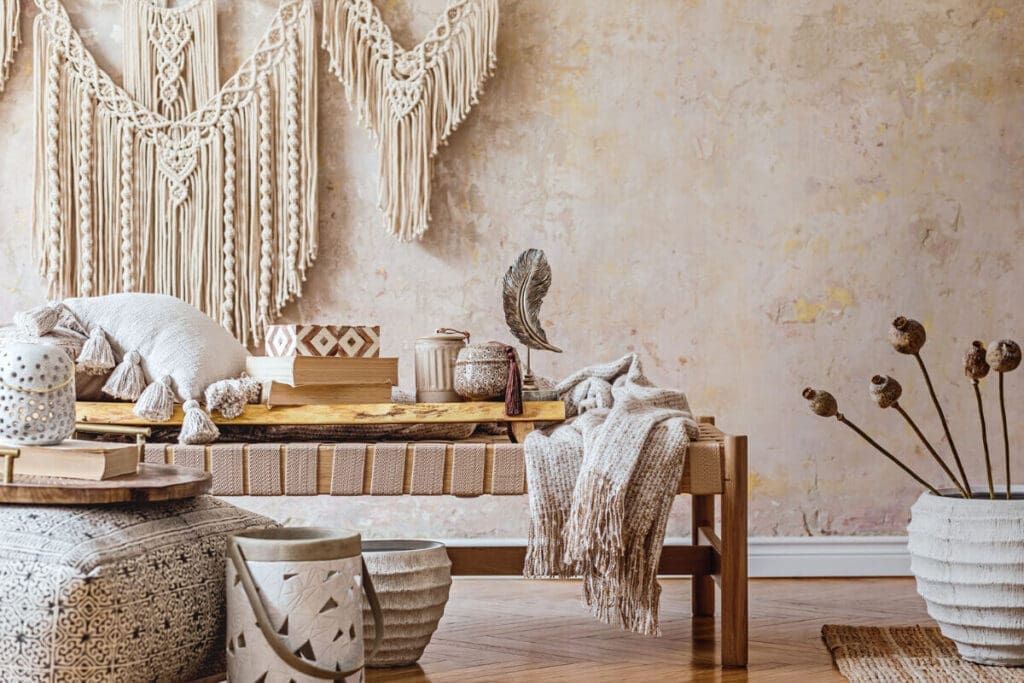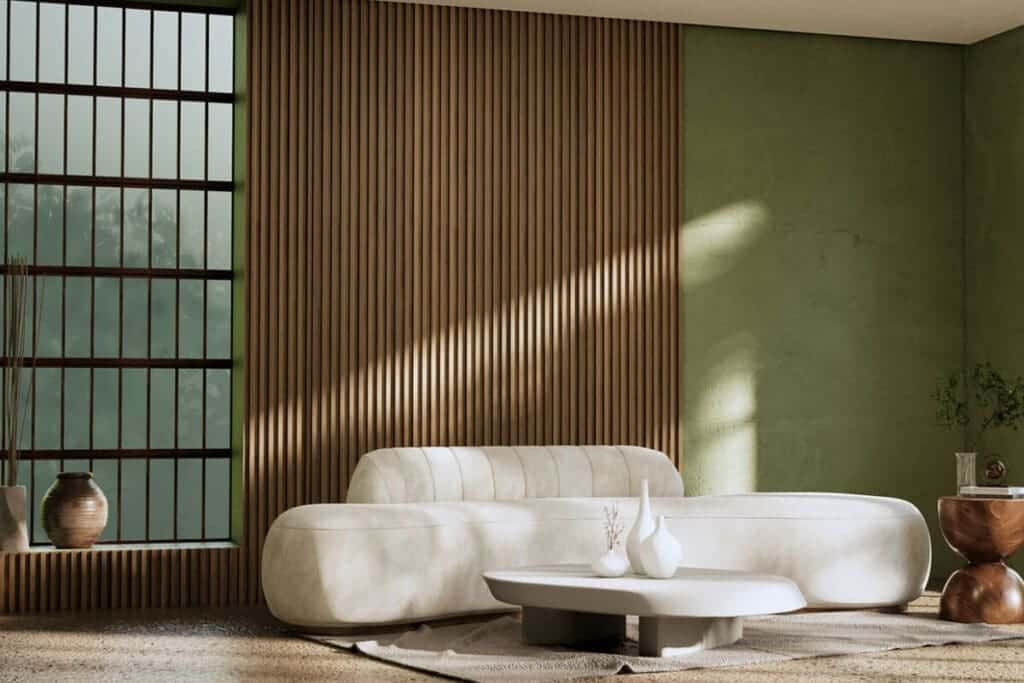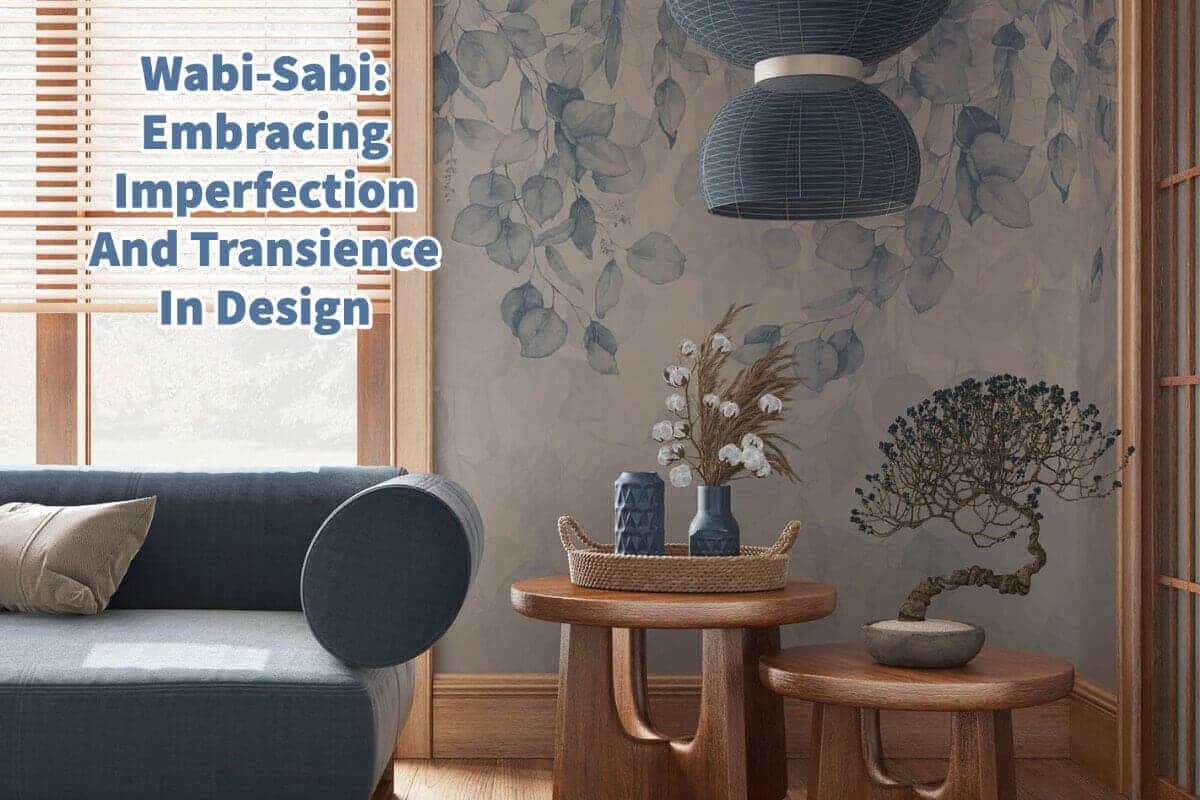One of my favorite design trends is Wabi-Sabi. The Wabi-Sabi has long been a popular design trend.
In an era where everything is mass-produced to perfection, where symmetry is celebrated, and where glossy, flawless finishes are the norm, the ancient Japanese design philosophy of Wabi-Sabi offers a breath of fresh air. Instead of striving for perfection, Wabi-Sabi celebrates imperfection and sees beauty in the simple, rustic, and imperfect life and design choices.
Table of Contents
- What Is Wabi-Sabi?
- Incorporating Wabi-Sabi In Interior And Product Design
- 1. Embrace Natural Materials
- 2. Choose Handmade Items
- 3. Celebrate Visible Repairs
- 4. Keep It Simple
- 5. Incorporate Aged Materials
- 6. Welcome Asymmetry
- 7. Use Muted, Natural Colors
- 8. Appreciate The Beauty Of Decay
- 9. Use Textures
- 10. Create A Connection To Nature
- 11. Showcase Imperfect Shapes
- 12. Opt For A Minimalist Design
- 13. Use Organic Forms
- 14. Accept And Use Flaws
- 15. Create Spaces For Reflection
- The Grace Of Wabi-Sabi In Design
- Related Content
What Is Wabi-Sabi?
Derived from Buddhist teachings, Wabi-Sabi is a Japanese philosophy that encourages us to find beauty in imperfection and appreciate the natural cycle of growth and decay.
“Wabi” represents rustic simplicity, freshness, and quietness, while “Sabi” signifies the beauty of age and wear. Together, they offer a perspective that celebrates cracks, crevices, and all other marks left behind by time, weather, and love.
Wabi-Sabi rejects the shiny, new, and perfect in favor of the worn, imperfect, and weathered design. It recognizes natural materials’ beauty and capacity for change and decay.
Incorporating Wabi-Sabi In Interior And Product Design
Wabi-Sabi is a great look to have for both interior and product design. It is about helping you get a “zen” in your product and interior design.
Let’s delve into fifteen ways to apply the Wabi-Sabi aesthetic to your design process.

1. Embrace Natural Materials
Wabi-Sabi incorporates wood, stone, clay, and metal, favoring their natural, unpolished state to highlight their innate character and imperfections.
2. Choose Handmade Items
Handmade items, with their slight irregularities, embody the spirit of Wabi-Sabi. Their subtle imperfections reveal the human touch and tell a unique story.
3. Celebrate Visible Repairs
Rather than hiding repairs, wabi-sabi makes them a feature. This ties in with the Japanese art of Kintsugi, where broken pottery pieces are mended using gold or silver lacquer, thus celebrating the object’s history.
4. Keep It Simple
Simplicity is at the heart of Wabi-Sabi. Avoid clutter and choose a few beautiful vital pieces for their simplicity and function.
5. Incorporate Aged Materials
Whether reclaimed wood, antique furniture, or a weathered metal piece, aged materials all have a character and depth that aligns perfectly with the Wabi-Sabi aesthetic.
At Mondoro, we produce recycled pine furniture; reclaimed wood such as pine that can be a great Wabi-Sabi look.
6. Welcome Asymmetry
Symmetry often equates to perfection, so opt for asymmetrical designs that feel more organic and less contrived.

7. Use Muted, Natural Colors
Choose a muted, earthy color palette that echoes the natural world, from soft greys and browns to greens and blues.
8. Appreciate The Beauty Of Decay
Find beauty in items that show the passage of time, such as a rusted garden tool or a faded piece of fabric.
9. Use Textures
Textures add depth and interest to a space. A mix of textures, such as a rough stone countertop alongside a smooth wooden table, embodies the Wabi-Sabi spirit.
10. Create A Connection To Nature
Incorporate elements that remind us of our connection to the natural world, such as potted plants or items made from organic materials.
11. Showcase Imperfect Shapes
In pottery or furniture design, slightly off-kilter or asymmetrical pieces are more exciting and authentic to the Wabi-Sabi aesthetic.
12. Opt For A Minimalist Design
Wabi-Sabi aligns with the less-is-more philosophy, so opt for clean lines and a minimalist approach to design,
13. Use Organic Forms
Organic forms that mimic nature and its irregularities are critical in Wabi-Sabi. Incorporate items that haven’t been overly processed or manipulated, and preserve their natural state.
14. Accept And Use Flaws
If a piece of furniture has a scratch or a textile has a slight tear, don’t discard or repair it. Instead, wabi-sabi will appreciate these as elements contributing to the overall aesthetic.
15. Create Spaces For Reflection
Wabi-Sabi is not just a visual aesthetic but a philosophical one. Create spaces in your design that encourage quiet reflection and a sense of tranquility.

The Grace Of Wabi-Sabi In Design
The Wabi-Sabi design philosophy offers a respite in a perfection-obsessed world. It encourages us to embrace the imperfections and appreciate the beauty that lies therein.
Rather than constantly seeking the new, shiny, and perfect, Wabi-Sabi asks us to find joy and beauty in the old, worn, and imperfect.
Incorporating Wabi-Sabi into your interior and product design isn’t about following hard and fast rules; it’s more of an approach, an attitude, and a willingness to see beauty in unexpected places.
Wab-sabi is about understanding and respecting the life cycle of objects and materials and cherishing the marks and memories they bear.
Whether you’re a designer seeking a fresh perspective or a homeowner looking to create a serene and authentic living space, embracing the principles of Wabi-Sabi can open up new realms of aesthetic and philosophical exploration. It’s a gentle reminder that life is transient, imperfect, and that’s what makes it beautiful.
Find out more about how Mondoro can help you create, develop, and manufacture excellent home decor and furniture products – don’t hesitate to contact me, Anita. Check out my email by clicking here or become a part of our community and join our newsletter by clicking here.
Mondoro gives out a FREE Lookbook to anyone interested. You can receive a copy of our latest Lookbook by clicking here.
Listen to our Podcast called Global Trade Gal. You can find it on all major podcast platforms. Try out listening to one of our podcasts by clicking here.
Subscribe to our Mondoro Company Limited YouTube Channel with great videos and information by clicking here.
Related Content
Home Interior Mirror Ideas, Manufacturing Home Decor Mirrors
Many Interior designers use mirrors to help them with their decorating. This is because a mirror can become a design focal point for any room. A mirror can help brighten a dark space and make a room look larger.
You can learn more by reading our blog, Home Interior Mirror Ideas, Manufacturing Home Decor Mirrors, by clicking here.
How To Manufacture Vietnamese Lacquerware?
Vietnamese lacquer requires many manufacturing steps in the lacquer production process, including making the base, preparing the lacquer base to be applied, and finally applying the lacquer paint onto the surface. Every piece must be carefully sanded to give it a very smooth surface. Vietnamese lacquerware production requires a lot of skill and knowledge.
To learn more, you can read How to Manufacture Vietnamese Lacquerware? An Insider’s Guide to Lacquer by clicking here.
What Is Gold Leafing Used In Home Decor Products?
The gold leaf is hammered gold. Some gold leaf manufactured today is hammered copper or gold mixed with other metals and alloys. The gold leaf is manufactured by gold beating. Gold beating is beating or pressing the gold into fragile sheets of paper.
You can discover more by reading What is Gold Leafing Used in Home Decor Products? by clicking here.

